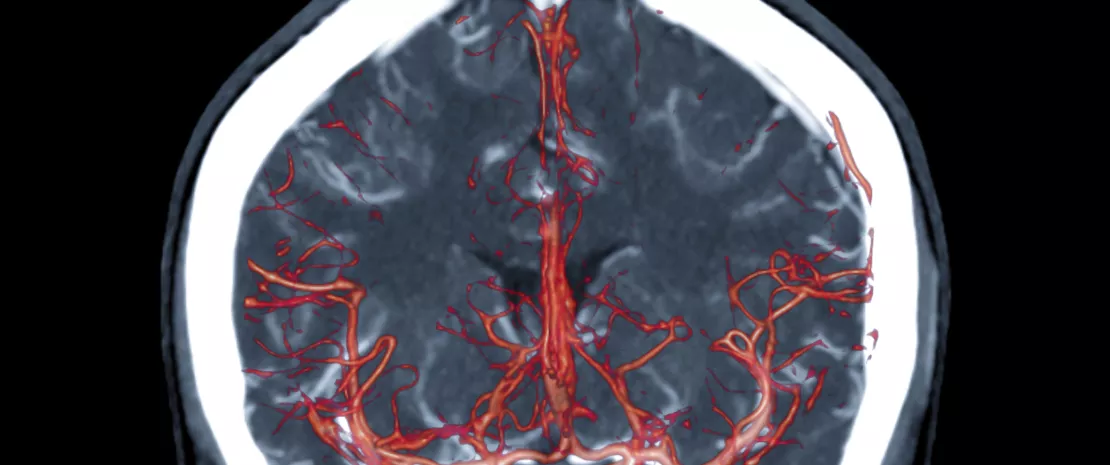Is the gut microbiota a major risk factor for intracranial aneurysm?
Non-clinical experiments seem to show that the gut microbiota could be able to directly affect the pathophysiology of intracranial aneurysm. How? By modulating inflammation.
Sources
This article is based on scientific information

About this article
Intracranial aneurysm occurs in 2 to 6% of the world’s population. Some bacteria could have a protective role in this condition, and others a harmful one. This could explain why environmental factors (diet, lifestyle, physical activity, tobacco…) modulating the microbiota could have a greater impact on the risk of suffering an aneurysm than genetic factors.
Aneurysm induced in two types of mice
How did the researchers come to this conclusion? By inducing intracranial aneurysm in mice though the injection into the cerebrospinal fluid of elastase, an enzyme that degrades artery walls. In a first experiment, a group of mice received a cocktail of oral antibiotics (vancomycin, metronidazole, ampicillin, neomycin) three weeks before the injection of elastase, and until the end of the experiment, i.e. three weeks after the injection. Objective: destroying their gut microbiota. Meanwhile, a control group did not receive anything. In a second experiment, the administration of antibiotics was stopped one day before inducing the aneurysm, in order to exclude any direct antibiotics effect on the incidence of aneurysm.
Sharp fall of incidence rate
The results are indisputable: within three weeks from the injection of elastase, only 6% of mice treated with antibiotics suffered an aneurysm, compared to 83% for mice with an unaltered gut microbiota. Even when antibiotics were withdrawn the day before the injection (second experiment), aneurysm incidence was significantly lower: 28% of cases vs. 86% in controls. Moreover, inflammation was reduced in antibiotic-treated mice: less macrophages and less inflammation markers. These results suggest that the gut microbiota contributes to the pathophysiology of aneurysm through inflammation modulation. It should be noted that the total suppression of the microbiota is an artificial construct, thus it can only be concluded that the gut microbiota is involved in this process but whether it plays a beneficial or harmful role cannot be assessed.
Microbiota, potential biomarker for the risk of developing an aneurysm?
The gut microbiota could directly affect the pathophysiology of intracranial aneurysm; and from a clinical point of view, its profile could be a biomarker for the combined effects of environmental factors. However, we should not make hasty conclusions. A comparative analysis of the human gut microbiota of subjects with and without intracranial aneurysm is still necessary to identify the contribution of the microbiota to the pathophysiology of intracranial aneurysm.










